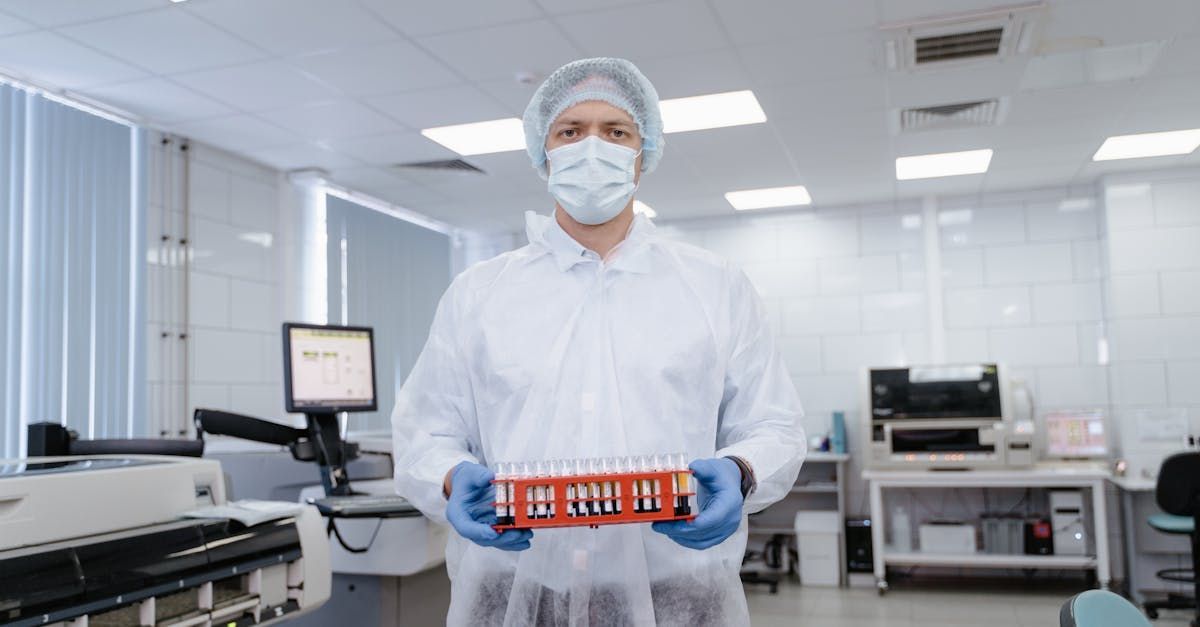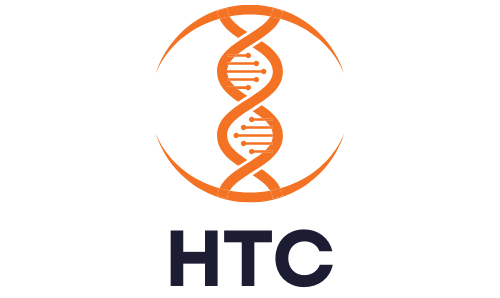Key Metrics and Considerations when Evaluating HealthTech Startups
The HealthTech landscape is rapidly evolving, driven by technological advancements and an increasing demand for innovative healthcare solutions. From digital health platforms and wearable devices to AI-driven diagnostics and personalized medicine, the HealthTech sector is poised to transform how we approach patient care, disease management, and overall health outcomes. Amidst this dynamic environment, identifying promising investment opportunities is crucial for investors looking to capitalize on the growth potential of HealthTech startups.
However, evaluating HealthTech startups requires more than a cursory glance at their product offerings or market potential. It necessitates a comprehensive understanding of key metrics and considerations that can drive the success and sustainability of these ventures. This article aims to provide a robust framework for evaluating HealthTech startups, enabling investors and academics to make informed decisions and maximize their returns in this fast-paced industry.
Financial Metrics: Assessing Growth and Sustainability
Revenue Growth
Revenue growth is a critical indicator of a HealthTech startup's ability to capture market demand and successfully acquire and retain customers. Sustained revenue growth signifies that the startup's products or services are resonating with the target market and that there is ongoing interest and adoption among users.
When evaluating revenue growth, investors should look at year-over-year growth rates to understand the trajectory of the startup's financial performance. It’s essential to identify the key drivers of revenue, such as the launch of new products, expansion into new markets, or the effectiveness of marketing strategies. A healthy revenue growth rate indicates robust market demand and successful customer acquisition strategies.
Burn Rate
Burn rate measures the rate at which a startup consumes its cash reserves to fund operations. It is a crucial metric for early-stage startups, as it provides insights into the company's financial health and its ability to sustain operations until it becomes profitable or secures additional funding.
A high burn rate might be acceptable in the early stages of a startup, especially if it is investing heavily in product development and market expansion. However, this should be balanced with a clear path to profitability or sustainable funding. Investors should assess the startup's cash runway, which indicates how long the company can continue to operate at its current burn rate without needing additional capital. A well-managed burn rate, coupled with strategic financial planning, is essential for the startup's long-term viability.
Customer Acquisition Costs (CAC)
Customer Acquisition Costs (CAC) represent the cost associated with acquiring a new customer, including expenses on marketing, sales, and other related activities. CAC is a vital metric for evaluating the efficiency of a startup's marketing and sales efforts.
A low CAC relative to the lifetime value of a customer (LTV) is generally desirable, as it indicates a sustainable and scalable business model. LTV represents the total revenue that a business can expect to generate from a customer over the entire duration of their relationship. Comparing CAC to LTV helps investors understand whether the startup can generate sufficient revenue from its customers to cover the costs of acquiring them and drive profitability.
A sustainable business model typically features a CAC that is significantly lower than the LTV, ensuring that the startup can maintain growth without exhausting its financial resources. Investors should scrutinize the startup’s strategies for reducing CAC and improving customer retention to ensure long-term success.
By focusing on these financial metrics, investors can gain a comprehensive understanding of a HealthTech startup’s growth and sustainability. These insights are critical for making informed investment decisions and supporting startups that are well-positioned for long-term success in the competitive HealthTech landscape.
Product Metrics: Assessing User Engagement and Clinical Outcomes
User Engagement Metrics
User engagement metrics are critical for understanding how effectively a HealthTech product resonates with its users and its potential for long-term adoption. These metrics provide insights into the product’s stickiness and user satisfaction, which are crucial for sustained growth.
Key Metrics:
- Active User Counts: The number of unique users who engage with the product over a specific period (daily, weekly, or monthly). High active user counts indicate strong user interest and product relevance.
- Session Lengths: The average duration of user sessions. Longer session lengths suggest that users find value in the product and are engaging with its features extensively.
- Retention Rates: The percentage of users who continue to use the product over time. High retention rates are a strong indicator of user satisfaction and product stickiness.
Importance of User Engagement: User engagement metrics help investors gauge the product's ability to attract and retain users. Consistent engagement is a sign that the product is effectively addressing user needs and has the potential to become an integral part of the users' healthcare routines. High engagement and retention rates are indicative of a product that can achieve long-term adoption and generate sustained revenue.
Clinical Outcomes
For HealthTech startups focused on clinical applications, demonstrating positive clinical outcomes is paramount. These metrics provide evidence of the product’s effectiveness in improving patient health, reducing healthcare costs, and increasing treatment adherence.
Key Metrics:
- Improved Patient Outcomes: Measures such as reduced symptom severity, improved quality of life, or increased recovery rates. These metrics demonstrate the direct impact of the product on patient health.
- Reduced Healthcare Costs: Indicators like fewer hospital readmissions, reduced emergency room visits, or decreased medication costs. Cost savings highlight the product’s value proposition to healthcare providers and payers.
- Increased Treatment Adherence: Metrics showing higher rates of patients following prescribed treatment plans. Increased adherence leads to better health outcomes and more efficient use of healthcare resources.
Demonstrating Clinical Outcomes: HealthTech startups must substantiate their claims of improved clinical outcomes through rigorous studies and data analysis. Clinical trials, pilot studies, and real-world evidence are crucial for validating the product's efficacy. Startups should be able to present compelling data that shows measurable improvements in patient health and economic benefits for the healthcare system.
Regulatory Approvals and Certifications
Regulatory approvals and certifications are critical milestones for HealthTech startups, significantly impacting their ability to commercialize products and gain market acceptance.
Impact of Regulatory Strategy: A robust regulatory strategy is essential for navigating the complex and evolving landscape of healthcare regulations. Successfully obtaining regulatory approvals or clearances, such as FDA approval in the United States or CE marking in Europe, enhances the startup’s credibility and marketability.
Progress in Obtaining Approvals: Investors should assess the startup’s progress in securing
necessary regulatory approvals. This includes understanding the timeline for approval, the challenges involved, and the strategies employed to address regulatory requirements. Early engagement with regulatory bodies and thorough compliance with guidelines can expedite the approval process and reduce potential delays.
By evaluating user engagement, clinical outcomes, and regulatory approvals, investors can gain a comprehensive understanding of a HealthTech startup’s product viability and market potential. These product metrics are crucial for identifying startups that not only develop innovative solutions but also demonstrate the ability to achieve widespread adoption and deliver tangible health benefits.
Market Metrics: Assessing Opportunity and Competition
Addressable Market Size
The size of the addressable market is a fundamental metric for evaluating the potential revenue and growth opportunities for HealthTech startups. A large and growing market indicates a higher potential for substantial returns on investment.
Importance of Market Size:
- Revenue Potential: A larger addressable market provides more opportunities for revenue generation. It signifies that there is a substantial customer base that can be tapped into.
- Growth Opportunities: Understanding the market size helps in identifying potential for future growth and expansion. It indicates the scale at which the startup can grow and the overall impact it can have on the industry.
Analyzing Target Market Segments:
- Segment Identification: Investors should analyze the specific segments within the broader market that the startup targets. This includes demographics, geographic regions, and specific healthcare needs.
- Market Expansion Potential: Evaluating the potential for market expansion is crucial. This involves assessing whether the startup can expand into new segments or geographical areas, thus increasing its market reach and revenue opportunities.
Competitive Landscape Analysis
Understanding the competitive landscape is vital for identifying potential threats and assessing the startup’s ability to differentiate itself in the market. A thorough competitive analysis helps in determining the startup's position relative to its competitors and the unique value it brings to the table.
Identifying Potential Threats:
- Direct Competitors: Identifying direct competitors that offer similar products or services helps in understanding the level of competition in the market.
- Indirect Competitors: Analyzing indirect competitors that might offer alternative solutions to the same problem is also important.
Differentiation Factors:
- Proprietary Technology: The startup’s use of proprietary technology can be a significant differentiator. Unique technological advancements can provide a competitive edge and act as a barrier to entry for other players.
- Intellectual Property: Strong intellectual property (IP) protection, including patents and trademarks, can safeguard the startup’s innovations and provide a sustained competitive advantage.
- Unique Partnerships: Strategic partnerships with established healthcare providers, research institutions, or technology companies can enhance the startup’s market position and provide access to critical resources and expertise.
Assessing Competitive Advantages:
- Sustainability of Competitive Edge: Investors should evaluate the sustainability of the startup's competitive advantages. This involves assessing how well the startup can maintain its unique position in the market over time, considering factors such as technological advancements, market trends, and potential new entrants.
- Adaptability and Innovation: The startup’s ability to adapt to changing market conditions and continuously innovate is crucial for sustaining its competitive edge. Investors should look for a culture of innovation and a proactive approach to market changes.
By analyzing market size and the competitive landscape, investors can gain insights into the overall opportunity and potential challenges that HealthTech startups may face. This comprehensive understanding helps in making informed investment decisions and identifying startups with the potential for long-term success and market leadership.
Notable Labs: A Benchmark for Evaluating HealthTech Startups
Notable Labs exemplifies the successful application of key metrics and considerations in the HealthTech sector. As a clinical-stage platform therapeutics company, Notable Labs leverages advanced AI and machine learning to develop predictive precision medicines. By examining Notable Labs, investors can gain insights into what makes a HealthTech startup promising and worth investing in.
Financial Metrics: Growth and Sustainability
Notable Labs has demonstrated impressive revenue growth driven by the increasing demand for personalized cancer treatments. Their innovative approach to precision medicine has attracted significant funding from prominent venture capital firms, ensuring a solid cash runway. Additionally, their efficient customer acquisition strategy has resulted in a low customer acquisition cost (CAC) relative to the lifetime value of a customer (LTV), indicating a sustainable business model.
Product Metrics: User Engagement and Clinical Outcomes
The success of Notable Labs is largely attributed to its robust user engagement metrics. They have a high count of active users, indicating strong adoption among healthcare providers and patients. Furthermore, Notable Labs has conducted rigorous clinical studies demonstrating improved patient outcomes, including increased treatment efficacy and reduced side effects. These positive clinical outcomes have been pivotal in gaining regulatory approvals and certifications, bolstering their market acceptance and credibility.
Market Metrics: Opportunity and Competition
Notable Labs operates in the rapidly growing market of precision medicine, which is projected to reach substantial market size in the coming years. Their focus on oncology, a segment with significant unmet medical needs, positions them well for future growth and expansion. Notable Labs maintains a competitive edge through its proprietary AI technology and a robust portfolio of intellectual property, including patents that protect their innovative approaches. Strategic partnerships with leading healthcare institutions further enhance their market position.
Qualitative Considerations: Team, Vision, and Execution
The strength and experience of the founding team are critical indicators of a HealthTech startup's potential for success. Investors should prioritize evaluating the domain expertise and track record of the team members. A founding team with a deep understanding of the healthcare sector, combined with technical expertise in their specific area of innovation, significantly increases the likelihood of navigating the complexities of the healthcare industry. This includes understanding regulatory requirements, managing clinical trials, and engaging with healthcare providers and patients. A proven track record in previous ventures or relevant industry experience can also provide assurance that the team has the capability to execute their business plan effectively.
Vision and Execution Plan
A startup’s vision should clearly articulate the problem it aims to solve and the innovative solution it offers. Evaluating the clarity and feasibility of this vision is crucial for determining the startup’s long-term potential. Investors should assess whether the startup's goals are realistic and aligned with market needs.
Equally important is the startup's execution plan. A well-defined execution plan outlines the steps the company will take to achieve its vision, including product development timelines, go-to-market strategies, and milestones for growth. The plan should also address potential challenges and outline contingency strategies. A robust execution plan demonstrates that the startup not only has a compelling vision but also the practical strategies to bring it to fruition.
Successful execution often hinges on the startup's ability to adapt and pivot in response to
market feedback and changing conditions. This adaptability, combined with a strong vision and execution strategy, forms the backbone of a HealthTech startup’s potential for success.
Conclusion
Evaluating HealthTech startups requires a multifaceted approach that integrates various metrics and considerations. Investors need to assess financial metrics, such as revenue growth, burn rate, and customer acquisition costs, to understand the startup’s financial health and sustainability. Product metrics, including user engagement, clinical outcomes, and regulatory approvals, are essential for gauging the product's market fit and potential for long-term adoption.
Market metrics, such as addressable market size and competitive landscape analysis, provide insights into the startup’s growth opportunities and competitive positioning. Additionally, qualitative considerations like the strength and experience of the founding team, the clarity and feasibility of the startup’s vision, and the robustness of its execution plan are crucial for evaluating the overall potential for success.
Staying updated on emerging trends, regulatory changes, and technological advancements in the HealthTech sector is vital. This ongoing awareness helps investors make informed decisions and adapt to the dynamic landscape of health technology. By leveraging this comprehensive evaluation framework, investors can identify promising investment opportunities in HealthTech and maximize their potential for returns.
Informed decision-making, backed by thorough analysis and a deep understanding of the industry, is key to navigating the complexities of HealthTech investments. By embracing this approach, investors can contribute to the advancement of innovative health technologies that have the potential to transform patient care and improve healthcare outcomes globally.










